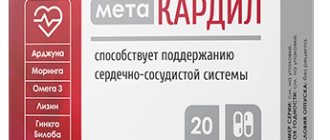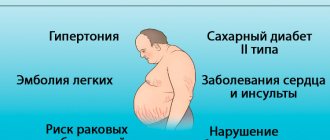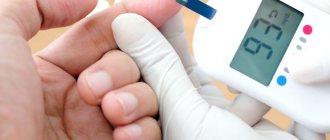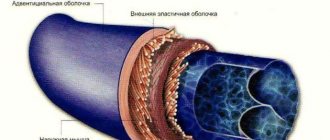What means
Blood pressure 120 over 80 - what does this mean? To do this, you need to know what these values mean:
- 120 mmHg Art. – systolic pressure, showing the level of blood pressure on the walls of the arteries at the moment of the onset of contractile movement of the myocardium;
- 80 mmHg Art. – diastolic pressure, showing the level of blood pressure on the walls of the arteries at the moment of completion of the contractile movement of the myocardium.
Thus, blood pressure (blood pressure) is an indicator of the force of blood pressure on the walls of blood vessels. Normal blood pressure is considered to be 120/80. But at the same time, for each person there is an individual norm, depending on certain factors. The main ones are:
- the speed at which myocardial contraction occurs;
- the volume of blood pumped by the heart over a certain time period;
- strength of resistance of vascular walls.
It is the stability of the listed indicators that sets the norm of blood pressure. Other factors may also have an additional influence. This is the person’s age group, the presence of chronic diseases, hormonal imbalances, and current psycho-emotional state.
Due to this, blood pressure levels can change throughout life. In a small child they will be quite low, but then - as they grow older - they will begin to rise and reach the accepted physiological (age) group.
Changes in hormonal levels can also provoke surges in blood pressure. That is why frequent changes in pressure during pregnancy and in adolescents are an acceptable norm and indicate an ongoing adaptation of the circulatory system.
During pregnancy, blood pressure readings of 120/80 are considered the absolute norm.
During pregnancy
Blood pressure of 120-127 over 80 during pregnancy is normal, if before pregnancy it was slightly lower. Changes in indicators will occur throughout the gestational period:
- during the first trimester (1–12 weeks), blood pressure may decrease, which is explained by the restructuring of all body systems;
- from the 18th week of gestation, the blood pressure level returns to the pre-pregnancy norm, but may increase slightly;
- By the end of the second trimester (26–27 weeks of pregnancy), blood pressure rises - if a woman does not experience headaches and feels well, then this should be considered as an acceptable norm.
Important! If an increase in blood pressure disrupts general well-being, then the pregnant woman requires medical attention.
Adults and elderly people
The physiological norm of blood pressure in women is somewhat different from that in men. Women's indicators are usually lower by about 6 mmHg. Art. This is due to hormonal fluctuations. For this reason, in old age, female hypertension is somewhat less common. In older people, “healthy” blood pressure levels will be higher. Physiological indicators – 146/158…83/84 mm Hg. Art. A blood pressure of 120/80 means the person is suffering from hypotension.
Children and teenagers
Blood vessels in childhood and adolescence are slightly more distensible than in adults. For this reason, their blood pressure levels are lower and this is a physiological norm. The younger the child, the lower his blood pressure.
Immediately after birth, the baby's blood pressure averages 70/45 mmHg. Art. Minor fluctuations are allowed. Then the indicators begin to gradually increase. At first, babies mature evenly, but when they reach a certain age, blood pressure levels may begin to differ.
For girls this is the age of 3–4 years, 12–14 years. For boys, these ages are 5–8 and 16 years. A blood pressure of 120/80, diagnosed in childhood, cannot be considered normal. But at the same time, in adolescents it will be considered acceptable or slightly increased.
What is considered normal blood pressure in men and women?
The ideal figure for a person is 120/80. A combination of 120/70 is also considered normal blood pressure.
The upper limit of normal is considered to be 140/90 mmHg. Art. At higher values, an examination is indicated to exclude arterial hypertension. The lower limit is considered to be 90/60 mmHg. Art. If the tonometer shows a lower value, then one may suspect that the person has insufficient blood supply to tissues and organs.
Blood pressure in both arms should be approximately the same, deviation of no more than 5 mm Hg is allowed. Art. A significant difference in values is a sign of the development of atherosclerosis of large blood vessels.
Since the indicator is not stable and depends on many factors, small deviations from generally accepted norms are allowed in the medical community. An indicator whose value falls within the range of 130/80 – 100/60 is considered normal.
The main criterion for the norm is a person’s well-being. Some patients with a pressure of 130/80 experience a headache, and some successfully live with low blood pressure and do not experience discomfort.
Approximate norms depending on age and gender are presented in the table below.
Blood pressure norms by age and gender
| Age/gender | Female | Female | Male | Male |
| top | lower | top | lower | |
| 3-6 | 85-95 (+/-5) | 45-50 (+/-5) | 85-97 (+/-5) | 45-55 (+/-5) |
| 7-10 | 95-105 (+/-5) | 55-60 (+/-5) | 98-105 (+/-5) | 55-60 (+/5) |
| 11-14 | 105-110 (+/10) | 60-65 (+/-5) | 105-110 (+/-10) | 60 (+/-10) |
| Up to 20 | 110-120 | 65-75 | 100-120 | 60-70 |
| Up to 40 | 110-130 | 75-80 | 110-130 | 70-80 |
| Up to 65 | 120-130 | 75-80 | 120-130 | 75-80 |
| older | 135 | 80 | 135 | 80 |
Blood pressure in men is affected primarily by physical and emotional stress, consumption of alcohol, strong tea and coffee, stress, and hereditary predisposition. Deviations from normal values may not be noticed for years, but a figure above 130/80 is a reason to consult a doctor. For athletes, the number 131/84 can be considered the norm.
Blood pressure in women is affected by physiological processes, including pregnancy and breastfeeding. During the period of bearing a child, special attention is paid to measuring blood pressure, since a change in the indicator indicates the presence of pathological processes and disruption of intrauterine development of the fetus.
The lowest rate is in children due to low vascular tone. As you grow older, the circulatory system develops, and blood pressure increases. In adolescence, jumps in numbers are acceptable due to hormonal changes in the body.
In men and women in adulthood, blood pressure increases due to narrowing of blood vessels due to atherosclerotic plaques. After 70 years, indicators begin to decline due to a decrease in the strength and elasticity of blood vessels.
Headache with normal blood pressure
Pressure 120/80 mm Hg. Art. is a physiological norm and headaches accompany it very, very rarely. And if a person has a headache with such blood pressure, then the cause must be sought in other conditions. These may be:
- experienced stress, nervousness;
- the onset of inflammation of the maxillary sinuses (sinusitis);
- complications of osteochondrosis of the cervical spine;
- development of ARVI, influenza, bronchitis;
- poisoning;
- diseases of the ENT organs and others.
To understand the true cause, it is necessary to track changes in well-being and consult a doctor.
Contraindications for hypertension
Headache with hypertension has its own characteristics. To get rid of it, it is necessary to relax the vascular walls and cause their expansion, as well as stimulate the outflow of excess fluid. At home, it is prohibited to take the following measures to treat pain caused by increased blood pressure:
- be in a stuffy room;
- take a hot bath, visit a bathhouse or sauna;
- drink coffee or natural strong tea, which also contains high concentrations of caffeine;
- buy or drink alcoholic beverages.
It is important to understand that treatment tactics and first aid differ for high and low blood pressure. Before taking medications, you must use a tonometer, and then periodically monitor the readings. It is especially important to monitor them in case of vegetative-vascular dystonia, a chronic disease in which blood pressure periodically changes both up and down.
Combination with high heart rate
Pulse is the rate of contraction of the myocardium. Its increase can cause increased physical activity, stressful situations, and neuroses. But if a person’s blood pressure remains within the physiological norm, but the pulse turns out to be rapid, what does this mean?
Blood pressure 120/80 in adolescents is an acceptable physiological norm
Rapid heartbeat - the pulse in this case reaches 100/110 beats per minute or higher - is called tachycardia. It can be caused by various reasons, in particular:
Causes of rapid pulse at normal blood pressure
- binge eating;
- abuse of coffee and caffeinated drinks;
- stressful/hysterical conditions;
- panic;
- being in a hot bath, steam room, sauna;
- climate change - moving from cold to hot;
- diseases accompanied by increased body temperature;
- various diseases of internal organs;
- disorders of the thyroid gland;
- severe poisoning.
Important! Tachycardia that occurs during pregnancy always requires the woman to be hospitalized in a hospital for treatment.
The heart rate rate for all ages will be individual. The following indicators (beats per minute) are considered acceptable:
- 0–5 years – 126…140;
- 5–8 years – 85…98;
- 9–20 years – 75…88;
- 20–60 years – 60…70;
- after 60 years – 64…74.
In case of poisoning, the pulse may exceed 100 beats per minute.
Prevention methods
Most patients are diagnosed with acquired hypertension. This means that timely prevention will help avoid its occurrence and strengthen blood vessels. At home you need to follow simple rules:
- provide daily moderate exercise;
- spend time outdoors;
- control weight, prevent the development of obesity;
- follow the principles of proper nutrition;
- to refuse from bad habits.
The Clinical Brain Institute offers individual programs for diagnosing and treating headaches caused by high blood pressure. Here you can get competent advice from doctors, undergo a full examination and monitor the dynamics of the development of the disease. Hypertension is not dangerous if you follow the recommendations, take medications on time and avoid situations that provoke increased blood pressure.
Combination with low heart rate
Hidden heart disease can reduce the pulse to 50–60 beats per minute with normal blood pressure. Many of them at the beginning of development do not have typical manifestations and declare themselves exclusively by a decrease in heart rate. Diseases that provoke the pathological condition can be myocarditis or acquired heart defects.
When measuring blood pressure, it is important to monitor your heart rate as well.
Bradycardia (low number of myocardial contractions per minute) can be caused by an overdose of drugs from the group of beta-blockers and cardiac glycosides. What to do in this case? You should immediately stop taking the medications and consult your doctor.
Blood pressure is 120/80 mm Hg. Art. is recognized as a physiological norm. But over time, the heart and blood vessels wear out. As a result, blood pressure indicators change - they, as a rule, increase, but for the current state of the body they remain normal.
And about medications
Do not self-medicate, do not listen to the advice of friends and neighbors. There are several groups of medications that lower blood pressure, and only a doctor can determine which drug should be taken at the moment.
Hypertension cannot be cured using folk remedies. Follow your doctor's recommendations and take the medications he prescribed for you.
Every Moscow clinic has health centers where you can get doctors’ recommendations on preventing hypertension. Many medical institutions operate schools for patients with arterial hypertension, where qualified specialists explain why hypertension is dangerous and how to treat it.
Treatment of headaches with low blood pressure
Headache with low blood pressure is typical for hypotensive people - people who experience a chronic decrease in blood pressure. This condition can be caused by overeating, alcohol, stress, and changes in weather conditions. A typical clinical picture of this condition is the appearance of dull, throbbing pains that are pressing and paroxysmal in nature.
Vascular headaches are often caused by:
- decreased venous tone, manifested by bursting pain in the back of the head;
- decreased tone of the cerebral arteries, which is characterized by aching pain in the temples, crown of the head and lasting for a long time.
In hypotensive patients, headaches often develop as a result of reasons such as:
- physical fatigue;
- daytime sleep;
- intellectual overstrain;
- first trimester of pregnancy;
- starvation;
- stay in transport;
- being indoors.
Sometimes cephalalgia becomes a precursor to a migraine attack in hypotensive patients. Shortly before the attack, the patient becomes nervous and irritable, after which an attack of pain begins in the forehead and temples, it is pulsating and very intense. Treatment of headaches and pressure should begin as early as possible, since the result depends on this. In this case the following is used:
- Baralgin;
- Vitamins (B12, C);
- Antispasmodics;
- Citramon;
- Paracetamol;
- Tincture of ginseng or eleutherococcus;
- Caffeine.
Please note: It is impossible to treat headaches during pregnancy and lactation without consulting a doctor, since many drugs are prohibited during this period.









